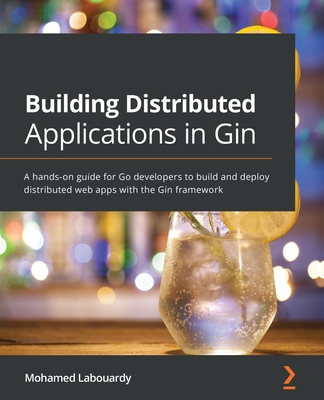Bun.js in Action: Real-World Solutions for Building Modern Backends
暫譯: Bun.js 實戰:構建現代後端的實用解決方案
Abhiii, Kumar
- 出版商: Independently Published
- 出版日期: 2024-10-23
- 售價: $930
- 貴賓價: 9.5 折 $884
- 語言: 英文
- 頁數: 90
- 裝訂: Quality Paper - also called trade paper
- ISBN: 9798344142449
- ISBN-13: 9798344142449
-
相關分類:
Node.js
海外代購書籍(需單獨結帳)
商品描述
Bun.js in Action is a practical guide for developers who want to learn Bun.js from scratch and use it to build fast, scalable backends. This book covers key topics such as TypeScript integration, API development, microservices, and real-time applications using WebSockets. You'll also explore advanced concepts like API security, working with databases, and deploying your Bun.js apps to the cloud.
Each chapter is packed with real-world examples to help you quickly grasp the essentials and apply them to your own projects.
Table of Contents
1. Introduction to Bun.jsOverview of Bun.js and Its Ecosystem
Why Use Bun.js? Benefits and Key Features
Setting Up Bun.js: Installation and Configuration
Running Your First Bun.js Project
Introduction to TypeScript in Bun.js
Setting Up a TypeScript Project
Understanding TypeScript Features in Bun.js
Type Safety and Development Best Practices
Creating a Simple HTTP Server
Handling Requests and Responses
Routing: Defining and Managing API Endpoints
Serving Static Files and Assets
Introduction to RESTful API Architecture
Creating and Testing API Endpoints
Handling HTTP Methods: GET, POST, PUT, DELETE
Building a Basic CRUD Application
Introduction to WebSockets and Real-Time Communication
Setting Up WebSocket Connections in Bun.js
Implementing Real-Time Features: Chat Application Example
Managing WebSocket Connections and Data Streams
Introduction, Offloading Tasks, Practical Use Cases.
Middleware in Bun.js: Authentication and Logging
Securing Your API: JWT, OAuth, and API Keys
Handling Errors and Validations in Bun.js APIs
API Versioning and Documentation
Introduction to Microservice Architecture
Decoupling Services: Designing Microservices with Bun.js
Communication Between Services: REST, WebSockets, and Message Queues
Managing and Scaling Microservices
Connecting Bun.js to Databases (SQL and NoSQL)
Setting Up a Database with Bun.js (e.g., PostgreSQL, MongoDB)
Implementing ORM with Bun.js: Working with Prisma/TypeORM
Database Transactions and Best Practices
Preparing Bun.js Applications for Production
Deploying on Cloud Platforms (e.g., Vercel, AWS, DigitalOcean)
Managing Environment Variables and Configurations
Monitoring and Performance Optimization
Writing Unit and Integration Tests
Using Bun.js Testing Tools (e.g., Bun's Built-in Test Runner)
Debugging Techniques and Tools for Bun.js
Ensuring Performance with Load Testing
- Recap of Concepts and resources.
商品描述(中文翻譯)
《Bun.js 實戰》是一本實用指南,適合希望從零開始學習 Bun.js 並利用它來構建快速、可擴展後端的開發者。本書涵蓋了關鍵主題,如 TypeScript 整合、API 開發、微服務以及使用 WebSockets 的即時應用程式。您還將探索 API 安全性、與資料庫的互動以及將您的 Bun.js 應用程式部署到雲端等進階概念。
每一章都充滿了實際範例,幫助您快速掌握要點並應用於自己的專案。
目錄
1. Bun.js 簡介
- Bun.js 及其生態系統概述
- 為什麼使用 Bun.js?優點與主要特性
- 設定 Bun.js:安裝與配置
- 執行您的第一個 Bun.js 專案
2. 開始使用 Bun.js 和 TypeScript
- Bun.js 中的 TypeScript 介紹
- 設定 TypeScript 專案
- 理解 Bun.js 中的 TypeScript 特性
- 類型安全與開發最佳實踐
3. 使用 Bun.js 建立 HTTP 伺服器
- 創建一個簡單的 HTTP 伺服器
- 處理請求與回應
- 路由:定義與管理 API 端點
- 提供靜態檔案與資源
4. 在 Bun.js 中使用 RESTful API
- RESTful API 架構介紹
- 創建與測試 API 端點
- 處理 HTTP 方法:GET、POST、PUT、DELETE
- 建立基本的 CRUD 應用程式
5. 使用 WebSockets 的即時應用程式
- WebSockets 與即時通訊介紹
- 在 Bun.js 中設定 WebSocket 連接
- 實作即時功能:聊天應用程式範例
- 管理 WebSocket 連接與資料流
6. 使用 Bun.js Workers
- 介紹、任務卸載、實際使用案例。
7. 進階 API 開發
- Bun.js 中的中介軟體:身份驗證與日誌記錄
- 保護您的 API:JWT、OAuth 與 API 金鑰
- 在 Bun.js API 中處理錯誤與驗證
- API 版本控制與文件
8. 使用 Bun.js 建立微服務
- 微服務架構介紹
- 解耦服務:使用 Bun.js 設計微服務
- 服務之間的通訊:REST、WebSockets 與消息佇列
- 管理與擴展微服務
9. 資料庫整合與資料持久性
- 將 Bun.js 連接到資料庫(SQL 和 NoSQL)
- 使用 Bun.js 設定資料庫(例如:PostgreSQL、MongoDB)
- 使用 Bun.js 實作 ORM:與 Prisma/TypeORM 互動
- 資料庫交易與最佳實踐
10. 部署 Bun.js 應用程式
- 為生產環境準備 Bun.js 應用程式
- 在雲端平台上部署(例如:Vercel、AWS、DigitalOcean)
- 管理環境變數與配置
- 監控與性能優化
11. 測試與除錯 Bun.js 應用程式
- 編寫單元測試與整合測試
- 使用 Bun.js 測試工具(例如:Bun 的內建測試執行器)
- Bun.js 的除錯技術與工具
- 透過負載測試確保性能
12. 結論與後續步驟
- 概念與資源回顧。










